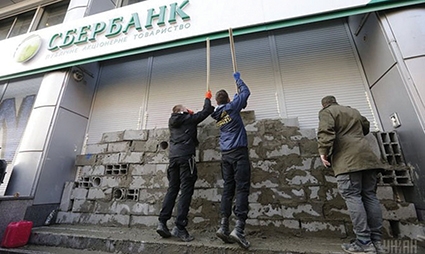Another 45 Banks in Ukraine to Be Liquidated
The assets of another 45 Ukrainian banks have been put up for sale, the press service of the Individual Deposits Guarantee Fund (IDGF) of Ukraine reported on June 7.
According to the announcement, assets worth 5.93 billion Hryvnia ($230 million) are up for sale, of which 95.5 percent are claims rights on loans, the remaining share being the main assets of the banks.
Since 2015, nearly 100 Ukrainian banks have been eliminated. As of the end of May, 90 banks remain in the country. According to the Chairman of the Fund for Guaranteeing the Deposits of Individuals (FGVFL), Konstantin Vorushilin, the bankruptcy of the “super-big banks" is not expected in the foreseeable future.
The State's debt to banks is quite impressive, and it continues to grow: at the time of writing, the Government of Ukraine owes $25.81 billion to banks, 55 percent of this amount belonging to the National Bank of Ukraine (NBU).
“For local small banks, this is a painful time as they engage in microcredit in the regions, unlike large institutions,” said Senior Analyst at ForexClub, Andrey Shevchishin. “I do not particularly believe the bankers or the fact that they will manage to unlock lending in the next year. On the one hand, the NBU is gradually reducing the discount rate, the level of which at the moment is 14 percent”.
In fact, this is a benchmark for banks in calculating lending rates, which, in theory, should also decline. But high stakes are not the only obstacle to the mass extradition of loans. Banks do not have enough free resources in order to resume offering full-fledged loans to the population (loans for cars, mortgages) and business (for development, purchase of fixed assets, etc.).
In addition, banks are now being forced to tighten credit risk assessment and show the real quality of their loan portfolios. That is, to disclose all the “bad” loans, under which bankers will have to form additional reserves. “And more stringent approaches to assessing credit risks are unlikely to be an incentive for lending to the economy,” Shevchishin said.
Requirements for borrowers from banks (primarily, the quality of collateral which they provide as security for loans) will also increase. Consequently, the circle of those who, even with the will and financial capacity, are able to issue a loan, will further narrow down. And this applies to both individual borrowers and businesses.
Dimitri Dolaberidze











